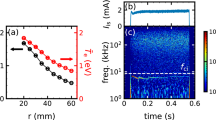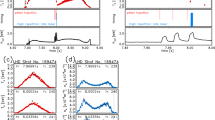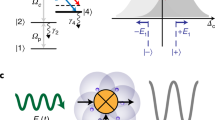Abstract
THE range and sensitivity of turbulence detection by acoustic probing of the lower atmosphere initiated by McAllister et al.1 has in part been restricted by the use of low power acoustic pulses (generally ∼ 100 W). We shall briefly describe a pulsed high power (8.1 kW input) sound radar system and present representative data obtained with a 2.7 kW system.
This is a preview of subscription content, access via your institution
Access options
Subscribe to this journal
Receive 51 print issues and online access
$199.00 per year
only $3.90 per issue
Buy this article
- Purchase on Springer Link
- Instant access to full article PDF
Prices may be subject to local taxes which are calculated during checkout
Similar content being viewed by others
References
McAllister, L. G., Pollard, J. R., Mahoney, A. R., and Shaw, P. J. R., Proc. Instn elect. electron. Engrs, 57, no. 4 (April 1969).
Little, C. G., Proc. Instn elect. electron. Engrs, 57, 571–578 (1969).
Author information
Authors and Affiliations
Rights and permissions
About this article
Cite this article
BOURNE, I., KEENAN, T. High power acoustic radar. Nature 251, 206–208 (1974). https://doi.org/10.1038/251206a0
Received:
Revised:
Issue Date:
DOI: https://doi.org/10.1038/251206a0
This article is cited by
-
Acoustic remote sensing of the boundary layer
Proceedings of the Indian Academy of Sciences Section C: Engineering Sciences (1982)
Comments
By submitting a comment you agree to abide by our Terms and Community Guidelines. If you find something abusive or that does not comply with our terms or guidelines please flag it as inappropriate.



